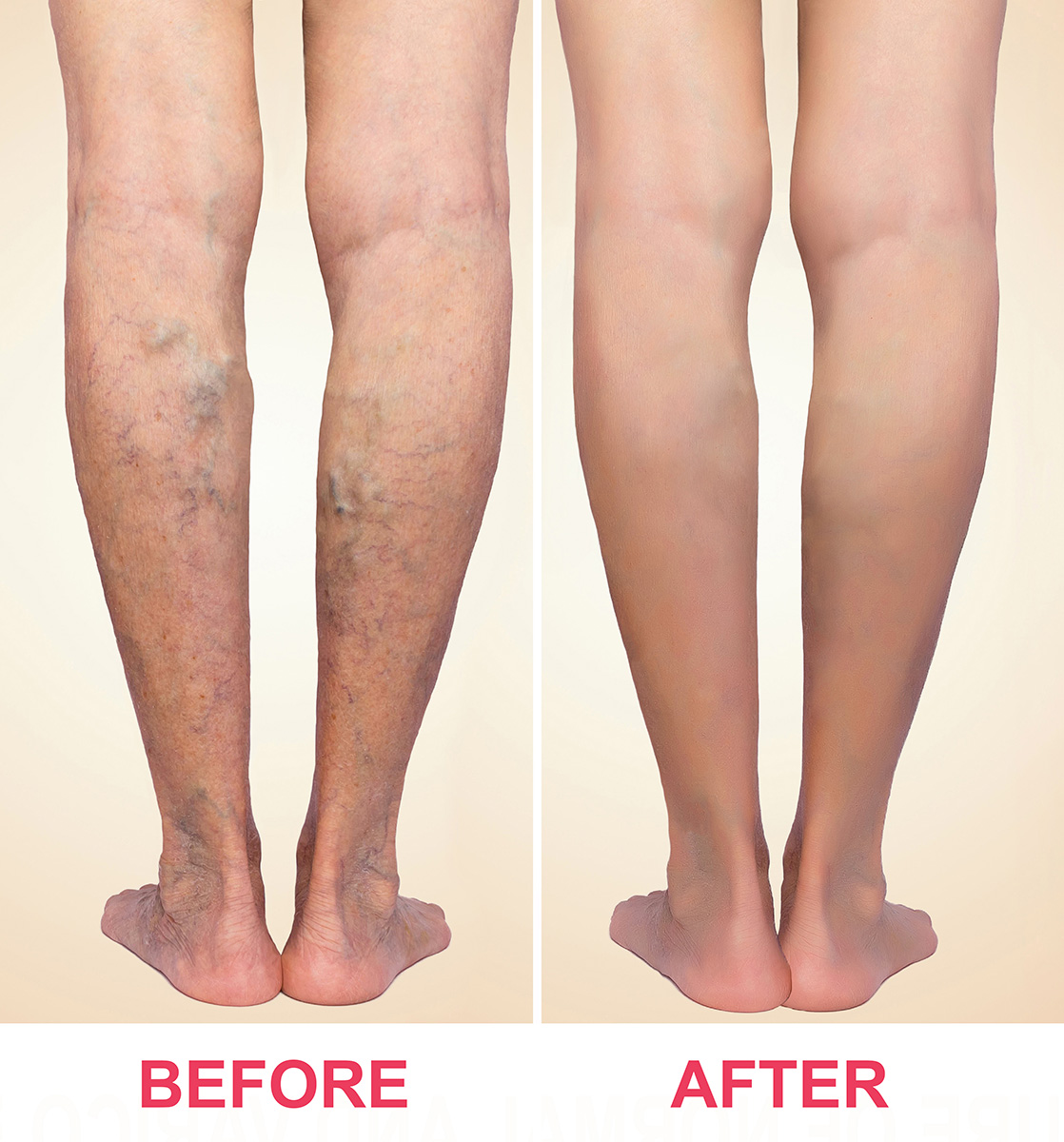Varicose Veins
Understanding Varicose Veins
If you are experiencing the symptoms of varicose veins, you’re not alone. More than half of all Americans over the age of 50 and a quarter of all adults have reported the presence of varicose veins.
One of our main goals at VIP is to help thoroughly educate individuals about varicose veins while providing the finest care for all your vascular needs. At VIP, you will find state-of-the-art healthcare with the most innovative and advanced approaches in medicine today.
Varicose veins are dilated blood vessels that tend to cause superficial bulging near the surface of the skin line. Varicose Veins are typically a sign of a serious underlying circulation problem. Venous symptoms such as varicose veins arise most commonly due to reflux (reversed blood flow). These veins appear blue or purple and can often have a tortuous, rope-like appearance to them.
The most common place for varicose veins to appear are on the legs and feet. They are noted to be more prevalent amongst women or individuals in professions that require extended periods of standing or sitting. Other factors that influence the likelihood of varicose veins include:
- Genetic predisposition
- Trauma
- Pregnancy
- Age
- Extended periods of standing OR sitting
- Obesity
- Smoking
Healthy veins are essentially elastic hollow tubes (blood vessels) that transport oxygen-depleted blood back towards the heart. These hollow tubes contain valves or small-flaps that open and close rhythmically with the pumping of the heart. The closing of these valves ensures that blood flows up towards the heart, together in one direction.
When a valve is defective or becomes weakened, blood reverses its direction of flow (reflux) and begins to back up and pool within the vessel. The reversal of blood flow then causes increased pressure and dilation of the vein walls allowing them to bulge, appear ropy, hose-like in size and eventually begin to become tortuous.
There are a plethora of myths today surrounding the topic of varicose veins. Suggestions that varicose veins are only a cosmetic issue have become a trending topic along healthcare discussion boards. Research has proven that the presence of varicose veins may be detrimental to your health for a variety of reasons including:
- Formation of blood clots
- Bleeding from the veins
- Developing skin ulcers
- Extreme burning and throbbing sensation
- Severe leg cramps
- Prolonged and increased pain following long periods of standing or sitting
Varicose Vein affects more than 10 million Americans today. Treatment options can vary and are specifically tailored to suit the patient’s needs. Some options may range from A non-surgical approach such as sclerotherapy or to a minimally invasive procedure such a phlebectomy or Endo-venous laser ablations.
When treating varicose veins, you start with the ultimate problem: reflux within the major trunks of the leg veins—the greater saphenous vein, which runs along the inside of the thigh, and the lesser saphenous vein, which runs along the back of the calf. If this reflux isn’t taken care of, other treatments will have little effect. Usually, these refluxing trunk veins are not visible on the skin.
To diagnose varicose veins, one of our experienced healthcare providers will need to perform an in-house physical exam and an ultrasound study. These exams will properly assess areas of concern to check for any venous diseases. Call VIP now to schedule a consultation with one of our healthcare providers and see which option is best for you!
- EVLT
- Sclerotherapy
- Phlebectomy

Have questions?
To learn more about how our physicians can help you, contact us directly (602) 200-9339


